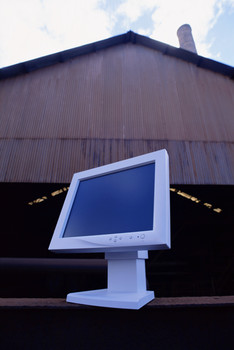 |
 |
Article
USEIR, a nonprofit organization sponsored by the Helen Keller Eye Research Foundation, is a federation of state eye registries that uses a standardized form to obtain voluntarily reported data on eye injuries and to obtain 6-month follow-up information. Reports are made by ophthalmologists to the USEIR database in Birmingham, Alabama. The primary purpose of USEIR is to provide prospective, population-based, epidemiologic data to improve the prevention and control of eye injuries. The registry contains information only for patients who have sustained a serious eye injury, defined as "an injury resulting in permanent and significant, structural or functional ocular change." USEIR comprises 39 state registry affiliates (representing 89% of the U.S. population); 32 states registered injuries during 1990-1994, and 27 states reported fireworks-related injuries during this period. From July 1990 through December 1994, a total of 4575 serious eye injuries from all causes were reported to USEIR; of the 274 (6%) fireworks-related injuries, 255 (93%) were unintentional injuries. Persons injured by fireworks were aged 4-63 years (median: 15 years); 211 (77%) were males. The largest proportion (123 {45%}) of injured persons were bystanders; 96 (35%) were fireworks operators, and for 55 (20%), status was unknown. Most (219 {80%}) injuries occurred during the Independence Day holiday period * ; 44 (16%) occurred during the New Year's holiday period *, and 11 (4%) at other times. Most (67%) injuries occurred at home; injuries also occurred in recreational settings (14%), on a street or highway (5%), and in parking lots or occupational settings (1%). Location was unknown for 13%. Most injuries were caused by bottle rockets (58%) Figure 1. Bottle rockets accounted for 68% of the injuries to bystanders. Eye Injury Registry of Alabama A retrospective review was begun in 1989 of severely injured persons registered from August 1982 through July 1989 through the EIRA, the first state registry of USEIR. Reports to the EIRA are made by Alabama ophthalmologists. Data were obtained from EIRA standard report forms and from direct interviews with each injured person and/or family members. Of the 70 fireworks-related injuries reported, 40 (57%) occurred during the Independence Day holiday period, and 27 (39%) occurred during the New Year's holiday period. These injuries resulted in legal blindness in 31 (44%) injured persons; in addition, enucleation was required for seven (10%). Bottle rockets accounted for 58 (83%) injuries, including eight of 10 injuries resulting in permanent damage to the optic nerve and all those resulting in enucleation. Patients who sustained eye injuries resulting from bottle rockets reported that factors associated with their injuries included product misuse, (e.g., the intentional aiming of the device at others {"bottle rocket wars"} and throwing the device after it had been lit but before ignition), device malfunction (especially immediate explosion after ignition), erratic flight characteristics even when used according to manufacturers' instructions, and device ricochet off hard surfaces (e.g., a car or the street). Reported by: S Brown, MPH, CD Witherspoon, MD, R Morris, MD, SM Hamilton, MD, FI Camesasca, MD, JA Kimble, MD, United States Eye Injury Registry, Birmingham, Alabama. Directorate for Epidemiology and Health Sciences, Div of Hazard Analysis, US Consumer Product Safety Commission. Div of Unintentional Injury Prevention, National Center for Injury Prevention and Control, CDC. |
Copyright 2025 4aflight.com All rights reserved.
|
 Eye injuries caused by fireworks are often severe and can cause permanently reduced visual acuity or blindness. Findings from the National Electronic Injury Surveillance System database maintained by the U.S. Consumer Product Safety Commission (CPSC) indicate that approximately 12,000 persons are treated each year in U.S. emergency departments because of fireworks-related injuries; of these, an estimated 20% are eye injuries. To improve characterization of fireworks-related eye injuries, data were analyzed from the United States Eye Injury Registry (USEIR) for July 1990-December 1994 and from the Eye Injury Registry of Alabama (EIRA) for August 1982-July 1989. This report summarizes the findings of these analyses.
Eye injuries caused by fireworks are often severe and can cause permanently reduced visual acuity or blindness. Findings from the National Electronic Injury Surveillance System database maintained by the U.S. Consumer Product Safety Commission (CPSC) indicate that approximately 12,000 persons are treated each year in U.S. emergency departments because of fireworks-related injuries; of these, an estimated 20% are eye injuries. To improve characterization of fireworks-related eye injuries, data were analyzed from the United States Eye Injury Registry (USEIR) for July 1990-December 1994 and from the Eye Injury Registry of Alabama (EIRA) for August 1982-July 1989. This report summarizes the findings of these analyses.